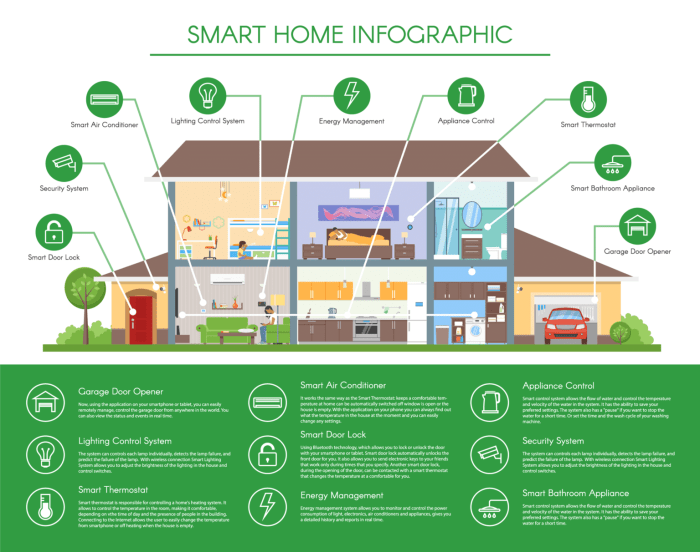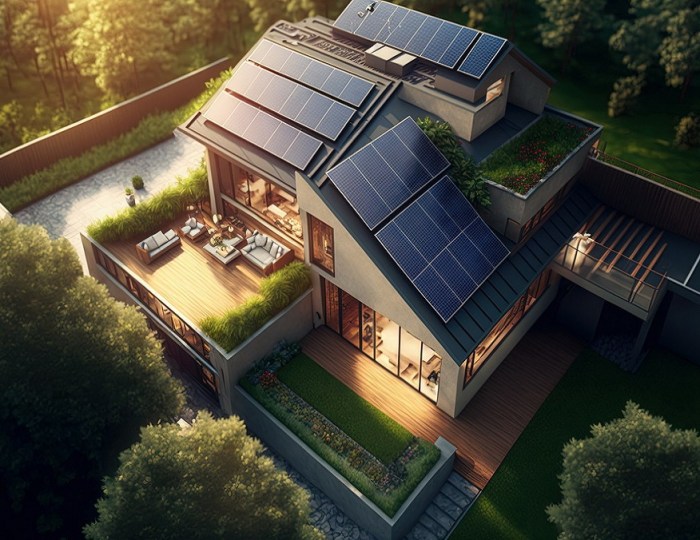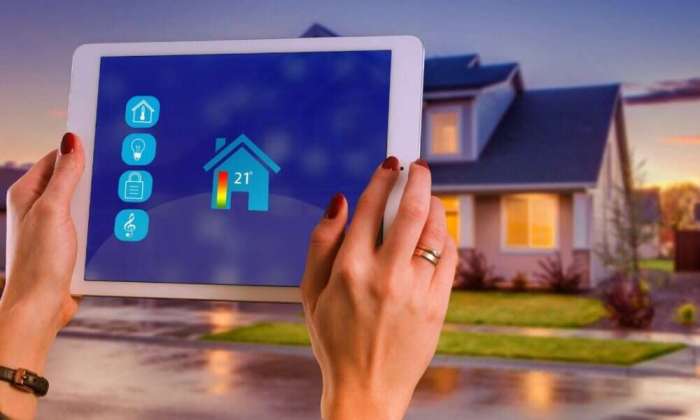The Rise of Self-Learning Smart Homes is not just a trend; it’s a revolution in how we live, interact, and automate our daily tasks. These innovative homes leverage cutting-edge technology to learn from our behaviors and preferences, transforming ordinary living spaces into intelligent environments. The evolution of smart home systems has been remarkable, pushing the boundaries of convenience, security, and efficiency while enhancing our quality of life.
As we delve deeper into this topic, we will explore the remarkable technologies that enable these self-learning systems, the seamless user experiences they provide, the critical security and privacy considerations, and what the future holds for smart home technology. With the Internet of Things (IoT) at the helm, these homes are designed to adapt, anticipate, and cater to our needs, making our lives not just easier but smarter.
Introduction to Self-Learning Smart Homes
Self-learning smart homes are the next evolution in home automation, utilizing advanced technologies to create living environments that learn and adapt to their inhabitants’ needs. These systems represent a significant shift in our approach to modern living, offering not just convenience, but also enhanced comfort, efficiency, and security. The emergence of these intelligent homes is not just a trend; it reflects a growing demand for personalized living experiences as technology continues to evolve.
The backbone of smart home technology lies in artificial intelligence (AI) and machine learning, which enable devices to analyze patterns and adjust their behavior accordingly. Over the years, smart home systems have evolved from mere remote-controlled gadgets to complex networks capable of making intelligent decisions based on user preferences. Transitioning from traditional homes to self-learning smart homes brings several benefits, including energy efficiency, improved security, and a higher quality of life.
Key Technologies Enabling Self-Learning
The rise of self-learning smart homes is powered by several key technologies that facilitate their intricate functionalities.
- Artificial Intelligence and Machine Learning: These technologies allow smart home systems to learn from user behavior, enabling automation that feels intuitive and responsive.
- Internet of Things (IoT): IoT connects various devices and appliances within the home, creating an interconnected ecosystem that communicates seamlessly. This connectivity is essential for devices to share data and work together efficiently.
- Examples of Smart Devices: Devices like smart thermostats, smart speakers, and intelligent lighting systems exemplify self-learning technology, adapting to user preferences over time for an enhanced living experience.
User Experience and Interaction
Self-learning smart homes excel in adapting to user preferences and behaviors, creating personalized environments that enhance the overall user experience. For instance, a smart thermostat can learn a user’s schedule and preferences, adjusting the temperature automatically for maximum comfort and energy savings.
Imagine entering your home after a long day; the lights dim to your favorite setting, your favorite playlist begins to play, and the temperature is just right. Such scenarios illustrate the potential of automation in creating a seamless living experience. Additionally, voice-activated assistants like Amazon Alexa or Google Assistant play a critical role in the functionality of smart homes, allowing users to control devices through simple voice commands, further simplifying interaction.
Security and Privacy Considerations
As with any technology that collects data, self-learning smart homes come with their own set of security and privacy considerations. Ensuring the safety of interconnected devices is paramount, as vulnerabilities can lead to unauthorized access.
Modern smart home security solutions often outperform traditional security systems by offering real-time monitoring and alerts. However, as data collection is integral to the functionality of these systems, potential privacy concerns arise, such as the risk of personal data being compromised. Homeowners must implement robust security measures, including strong passwords and regular software updates to mitigate these risks.
Future Trends in Smart Home Technology
The future of smart homes is bright, with emerging technologies shaping what is possible in home automation. Innovations like advanced AI algorithms and improved IoT connectivity will enhance self-learning capabilities, making homes even smarter and more responsive to user needs.
Predictions for the next decade include more integrated systems that communicate across various platforms, leading to a more cohesive and user-friendly experience. Below is a comparison of current smart home technologies with anticipated future innovations:
| Current Technology | Future Innovation |
|---|---|
| Basic voice control | Context-aware voice assistants that understand intent and context |
| Simple automation | Advanced predictive automation that anticipates user needs |
| Standalone devices | Fully integrated ecosystems with cross-device compatibility |
Practical Implementation Strategies, The Rise of Self-Learning Smart Homes

Homeowners looking to transition to self-learning smart homes can take several practical steps to ensure a smooth implementation. Beginning with a thorough assessment of their needs and preferences is essential.
- Gradual Integration: Start with a few essential devices, such as smart bulbs or thermostats, to ease into the transition.
- Research and Select Devices: Choose devices known for their compatibility and ease of use, like those from reputable brands.
- Prioritize Security: Implement strong passwords and enable two-factor authentication on devices to safeguard your system.
Key considerations for effective implementation include starting small, focusing on compatibility, and prioritizing security measures.
Case Studies of Successful Self-Learning Smart Homes

Several case studies illustrate the successful integration of smart home technology, showcasing the benefits and lessons learned from these implementations. For instance, a family in California transitioned to a fully integrated smart home, reducing energy costs by 30% and enhancing their overall quality of life.
Lessons learned from successful implementations highlight the importance of user training and continuous system updates. Below is a table showcasing features and outcomes from different case studies:
| Case Study | Features | Outcomes |
|---|---|---|
| California Family | Smart thermostat, lighting, and security | 30% energy savings, enhanced comfort |
| New York Apartment | Voice-activated assistants, automated curtains | Improved accessibility, convenience |
End of Discussion: The Rise Of Self-Learning Smart Homes

In conclusion, the journey through The Rise of Self-Learning Smart Homes reveals a landscape brimming with potential and innovation. From enhanced user interactions to fortified security measures, these homes are redefining modern living. As technology continues to advance, embracing self-learning smart home systems will not only prepare us for the future but also significantly improve our day-to-day experiences, making life more efficient and enjoyable.